Audemars Piguet
The Holy Trinity, Part 2: The Rule Breakers of the Swiss Watch Industry
Audemars Piguet
The Holy Trinity, Part 2: The Rule Breakers of the Swiss Watch Industry
Part 1 of this series can be found here.
*All information provided by Vontobel Luxury Groups Shop based on FY2017 information.
*Watch sales share refers to the percentage of business coming from watch categories.
Richard Mille, Founder Richard Mille
When God made Richard Mille, he broke the mould. Because what Mille has achieved since founding his eponymous brand along with partner Dominique Guenat in 2001, was not so much to create the single most successful new watch brand in over a century (he did this, of course), but something much bigger…
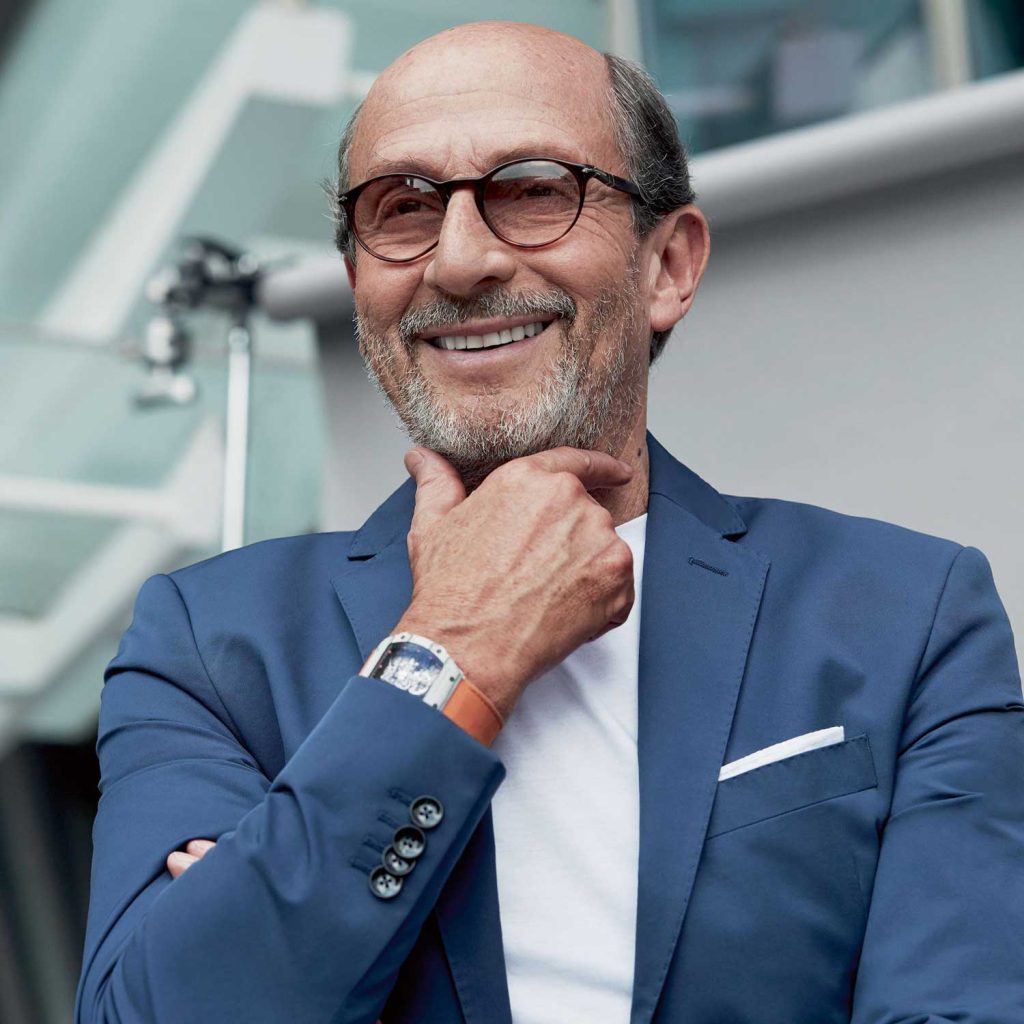
Richard Mille, juggernaut and founder of Richard Mille
• Change (2017, compared with 2016): +16%
• Watch sales share: 100%
• Worldwide market share: 0.7%
[/td_block_text_with_title]
One day Harvard Business School and every great university on the planet will teach the rise of Richard Mille as a mandatory course. The only problem is, his achievements are impossible to replicate. Why? Because of three major factors.

The brand’s flagship boutique in Taipei on the ground floor of the Mandarin Oriental

Pierre Casiraghi at the Les Voiles de Saint Barth

Rafael Nadal wearing his Richard Mille watch during competition
Fourthly, and perhaps the most important thing that should be taught to the next generation of watch leaders, Richard Mille is irrefutably the greatest originator in modern watchmaking history, but he is also one of the planet’s kindest, warmest and most genuine human beings. It is incredible that in an industry rife with gossip, I have never once heard another person say a single negative thing about Mille. Quite the opposite: he is universally and deservedly showered with praise and affection.
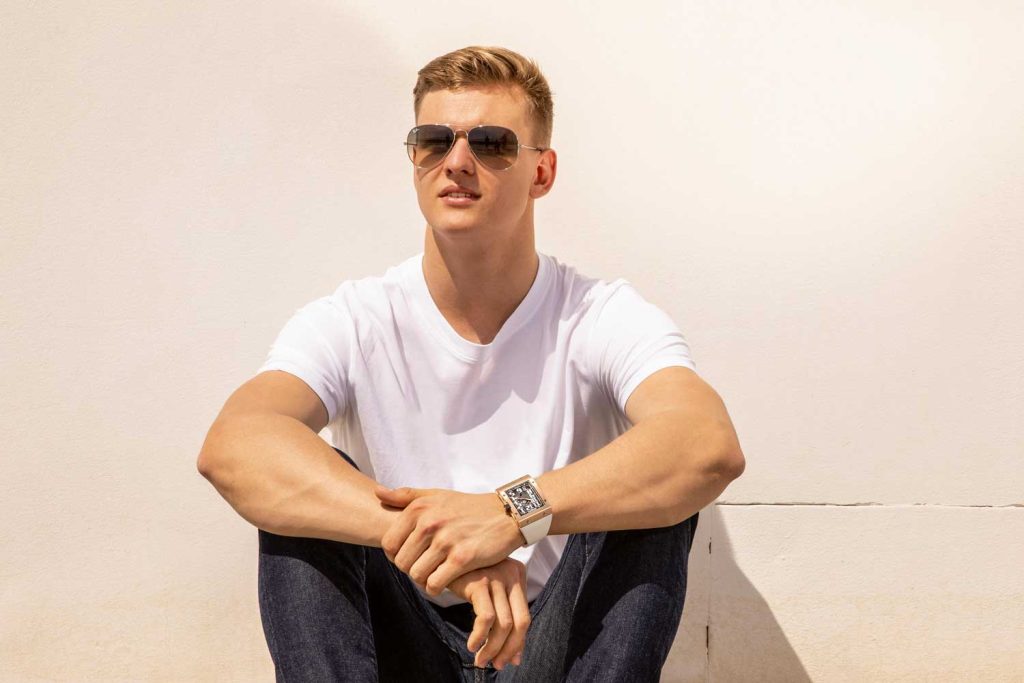
Mick Schumacher, son of Michael Schumacher and a new face of the brand
Raynald Aeschlimann, CEO Omega
For a leader as dynamic, driven, innovative and brilliant as Raynald Aeschlimann, it is sometimes hard to fathom how he can also be so genuinely nice as a human being. While other CEOs try to erect walls between themselves and others, Aeschlimann is the single greatest galvaniser for Omega passion.
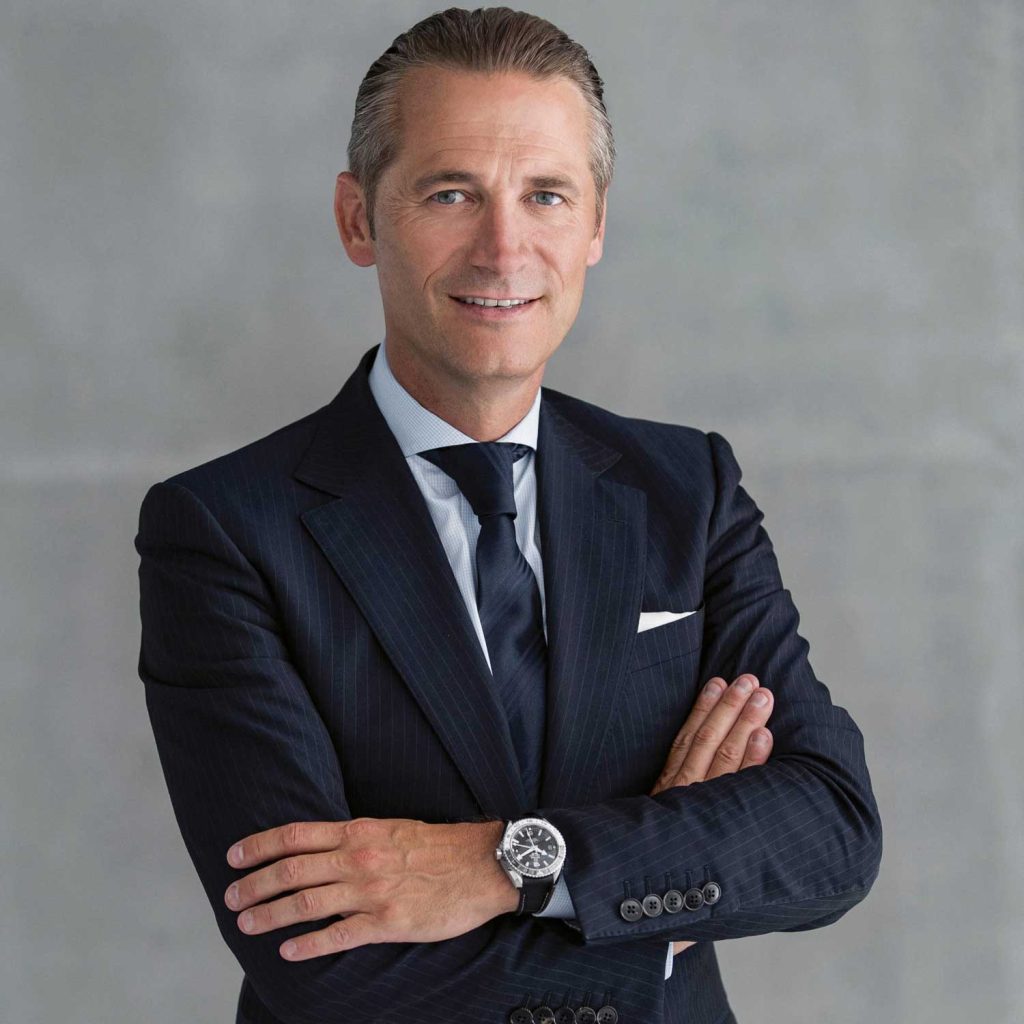
Raynald Aeschlimann, Omega
• Change (2017, compared with 2016): +7%
• Watch sales share: NA
• Worldwide market share: NA
[/td_block_text_with_title]
And while the majority of Swiss watch brands consider their latest timepieces “products”—as in “these are our latest products – which has left me baffled as to why you would possibly place a miniature miracle of mechanical engineering and artisan craft in the same category as bananas or cabbage, Omega with Aeschlimann at the helm does not. They consider their watches manifestations of courage and very possibly the greatest human achievement, as expressed by the Omega Speedmaster; or intrinsically linked with the greatest heroic archetype in modern mythology, James Bond, as with the Seamaster 300. And the great thing is, you get the feeling that Aeschlimann and his team at Omega, while running one of the world’s most iconic watch brands, are also genuinely having fun and loving every precious second of what they are doing.
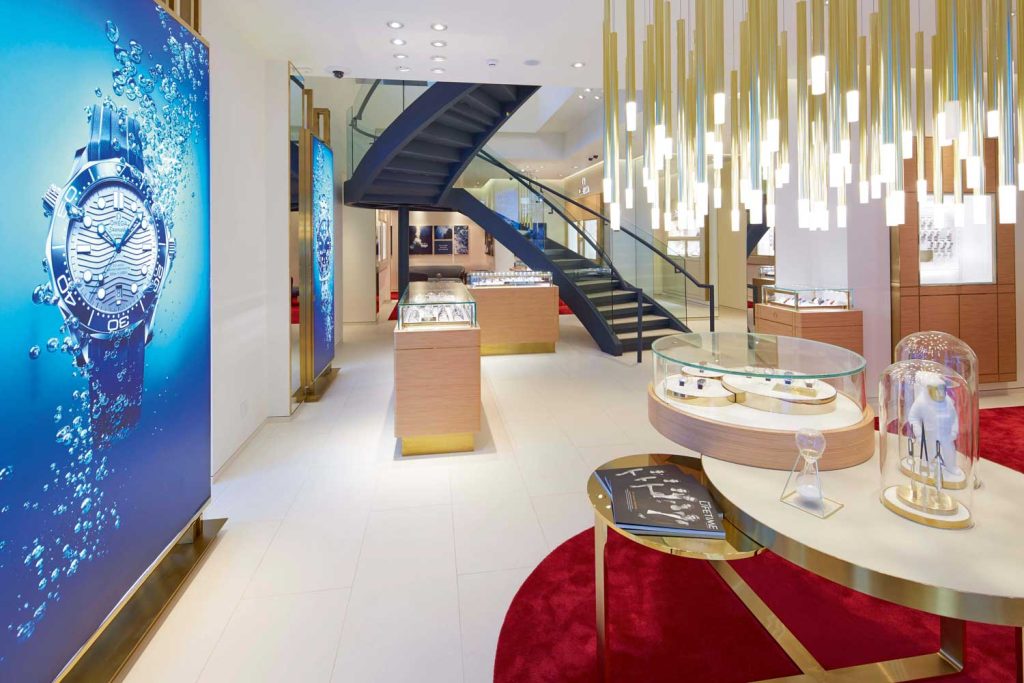
The Omega flagship store in Bern

The Omega flagship store in Bern
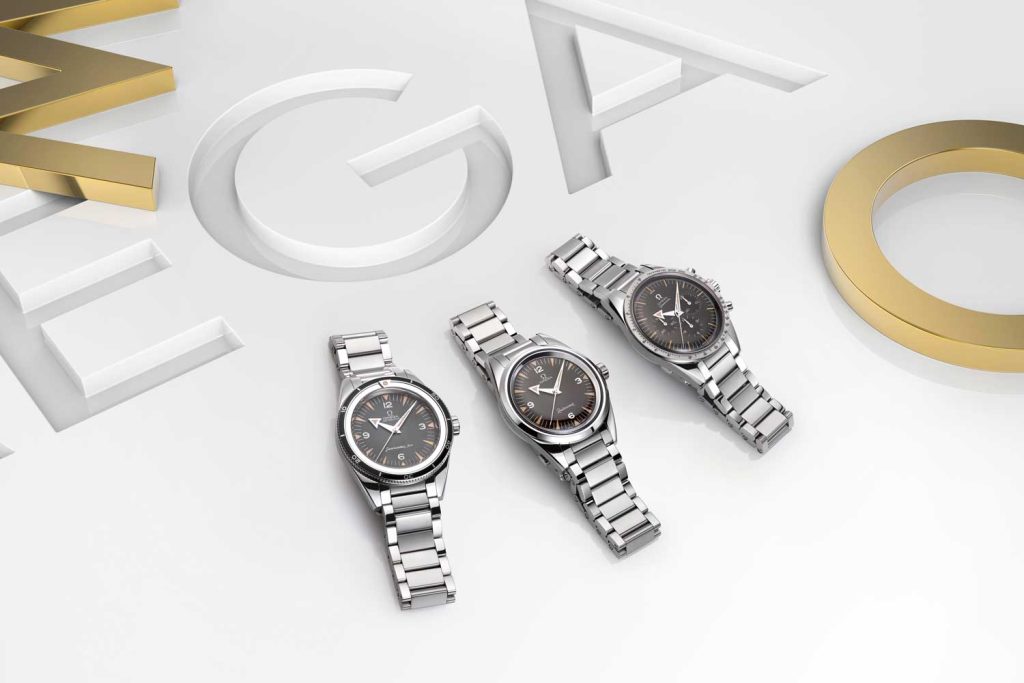
The Trilogy series from 2017
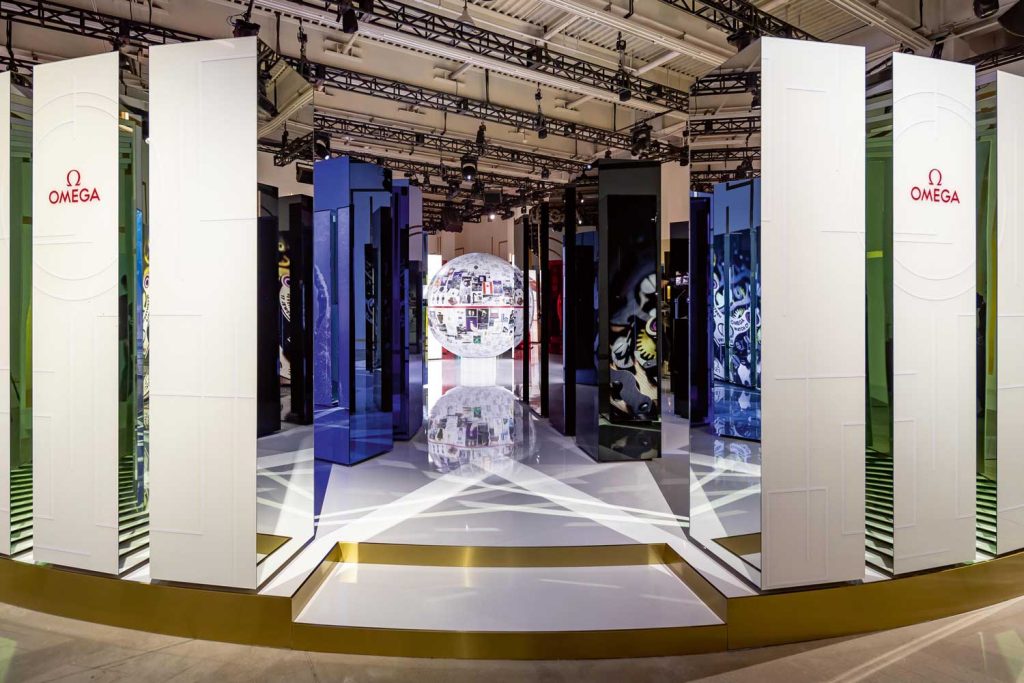
Omega’s recent Planet Omega exhibition in Shanghai embraces the future
Case in point: each time I go through customs and the X-ray machine reveals several watches in my carry-on luggage, the customs official will ask, “Any Rolex?” My response is invariably, “No, just a few Omegas like this,” and I will show him the vintage Speedy on my wrist. He will, nine times out of 10, hand me back my backpack and tell me to have a good day. This is not lost on Aeschlimann who understands with his typical brilliance that wearing another watch might put a smile on your face but anger those around you. Conversely, wear an Omega and everyone smiles back at you. For this reason as well as its accessible price, the Speedmaster Professional is rapidly becoming the watch of a new generation that eschews the clichéd trappings of status, and looks instead for ethics and content in what they wear.
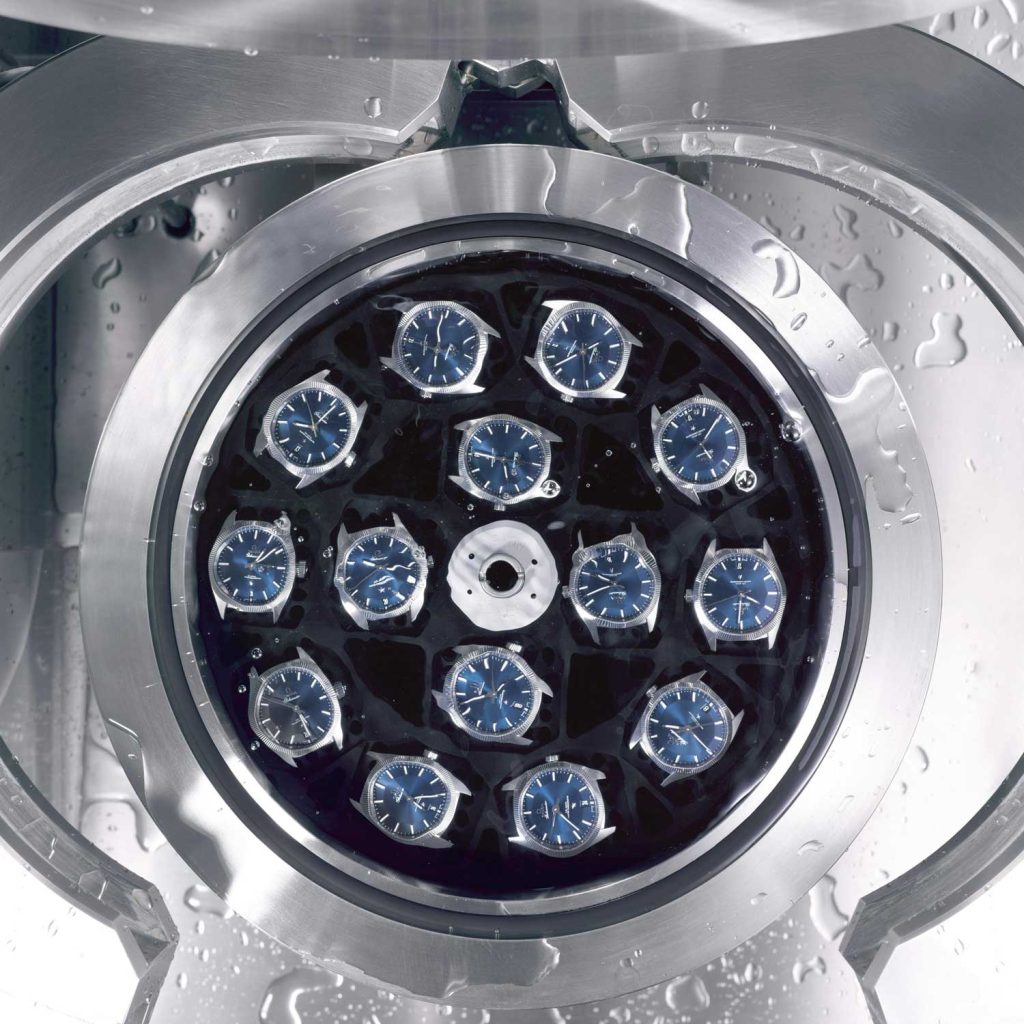
One key Omega milestone in recent years is the development of the METAS Master Chronometer certification, which adds a magnetic resistance requirement to ensure accurate timekeeping. Since then, Omega has gone on to expand its production of Master Chronometer-certified movements.
François-Henry Bennahmias, CEO Audemars Piguet
Who is François-Henry Bennahmias? To me, he is a figure that is controversial, polarising, but whose genius cannot be denied. Full disclosure: I have tremendous affection and deep respect for the man and consider him a friend, so it was interesting but also disturbing to see how many people (the majority of which were comfortably nestled in the cloak of anonymity provided by social media) were so keen to pile on the seething pool of viciousness when it came to criticising Audemars Piguet’s now infamous CODE 11.59 and vilify Bennahmias as the man behind this watch.

François-Henry Bennahmias, Audemars Piguet
• Watch sales (2017, in CHF million): 950
• Change (2017, compared with 2016): +12%
• Watch sales share: 100%
• Worldwide market share: 2.6%
[/td_block_text_with_title]
But the thing you need to understand is this: do you think this will have any effect on Audemars Piguet, which Bennahmias has single-handedly steered to becoming a one-billion-Swiss-franc company? No, it won’t. Do you think it will make the seemingly insurmountable lines to get on the Royal Oak wait list – let’s not even discuss the line for limited editions like the ceramic tourbillon – any shorter? No it won’t. Do you think it will prevent François from enacting his strategy to eliminate all multi-brand retailers (though he is receptive to offers for joint ventures) so that he can best control who his watches are sold to, how they are sold and actualise the full margin on them? Nope, it won’t. Do you think it is going to stop celebrities like John Mayer from declaring his love for his Royal Oak Concept tourbillon and bigging it up as the watch he wears most often? You can forget about that, too. So, in the end, whether the 11.59 stays or goes after its initial 2,000 watch production run, it doesn’t really matter. Bennahmias will still be at AP, and he’s got a long memory and a kind of Old Testament-like approach to retribution, so I might tread carefully.

The Audemars Piguet manufacture
You need to understand that if there is any one individual responsible for Audemars Piguet becoming the titanic success that it is today, it’s him. Back in the late ’90s when no one would serve them, François engaged with the rap community; and soon, everyone from Usher to Pharrell to most conspicuously Jay-Z, who would have his own edition of the Royal Oak Offshore, would be sporting an AP as a symbol of inclusion.

Chinese singer Lu Han dons the CODE 11.59 at the launch of the collection

Serena Williams wears a Millenary at her 23rd major victory on the tennis court
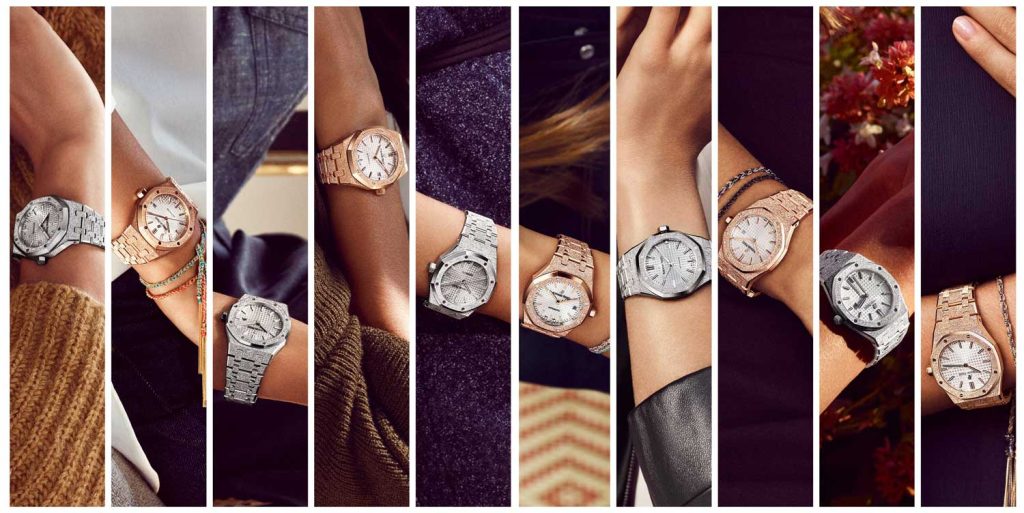
Innovations at Audemars Piguet in reaching out to the female market include the Frosted Gold collection
The thing about the Royal Oak is this. It is so iconic that when a man walks into a watch shop and has Royal Oak money in his pocket, he’s not going to leave with anything else. And in terms of quality, finish and most importantly instant recognition from his peers, he is going to be extremely satisfied – although, you could make the argument that Bennahmias is also largely responsible for the universal recognisability of the Royal Oak.

Friend of Audemars Piguet Renato Paratore visiting the maison

The brand’s sponsoring of Art Basel has led to new partnerships with great artists such as Tomás Saraceno
What is the biggest challenge Bennahmias faces? Actually, I can’t think of any once the whole 11.59 thing passes. To me, I would say, “Fuck the haters,” and keep doing what he’s doing so well and embrace the fact that the Royal Oak and AP are synonymous. Because, let me tell you, the vast majority of watch brands out there would kill to have this problem.










